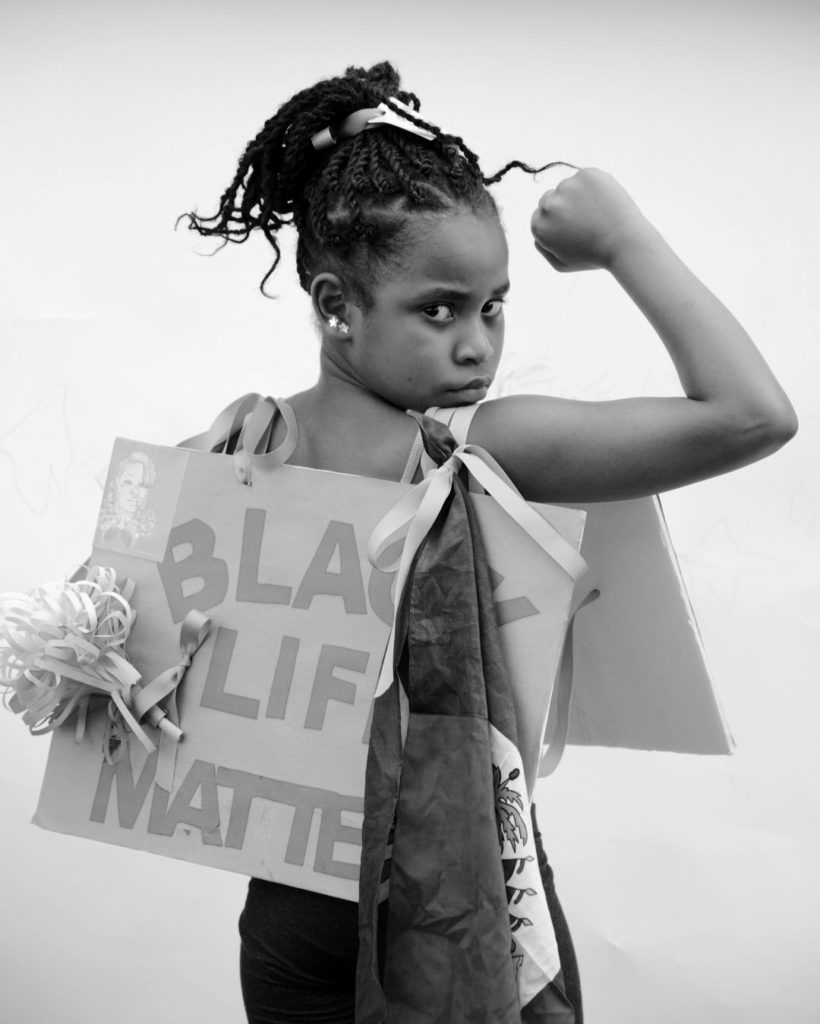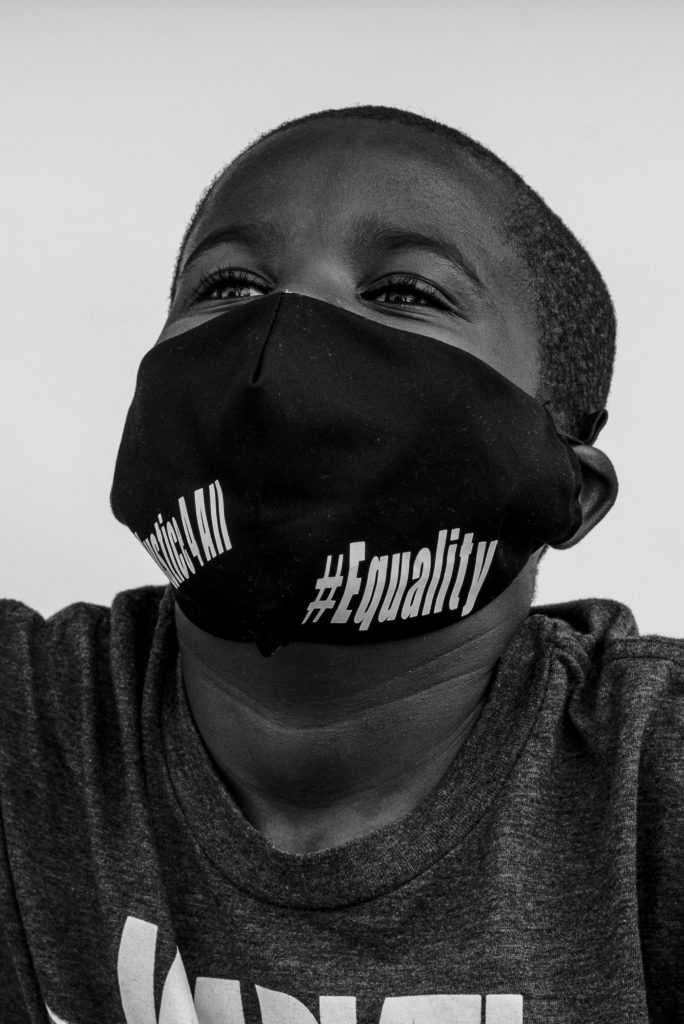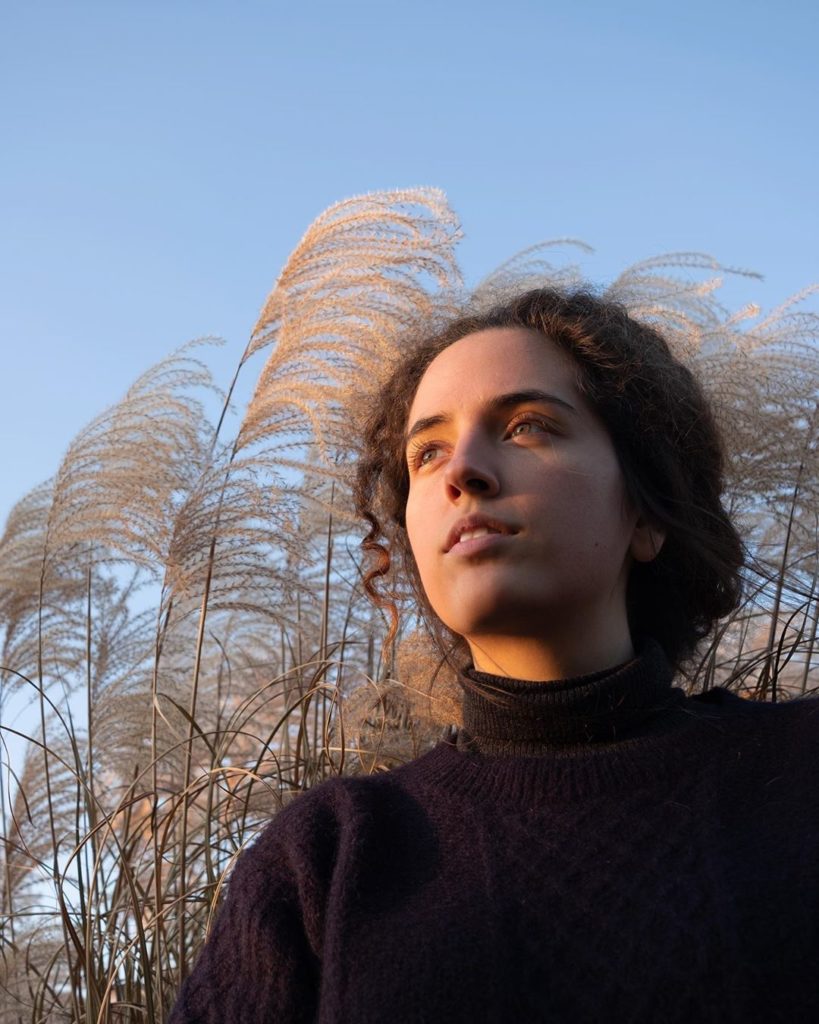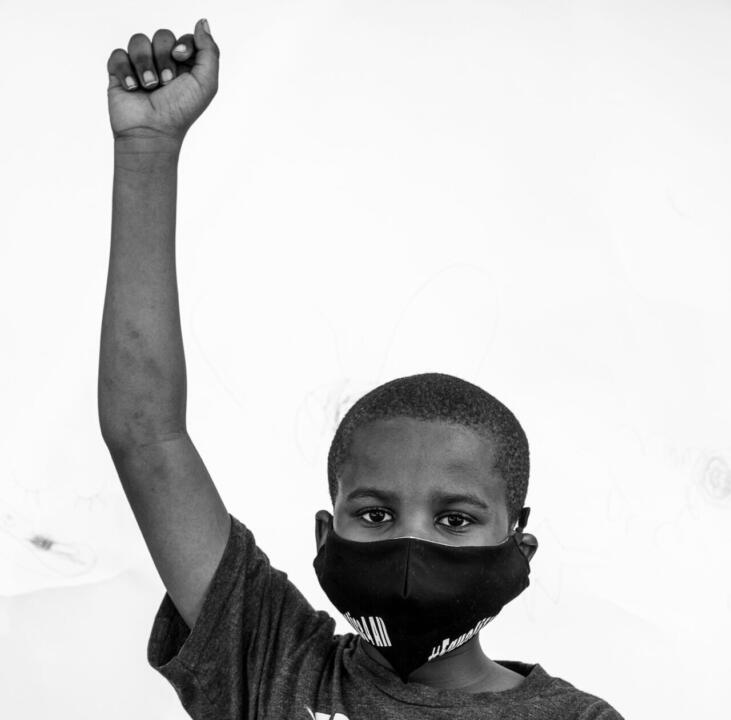A space of joy

Photojournalist Ximena Natera asked Christalina, the young girl in front of her, to turn around so she could photograph the back of her sign, which read “Black Life Matters.” Tied to her with bows and affixed with a hand drawn picture of Breonna Taylor, the sign’s power is punctuated by Christalina’s raised fist and confident posture.
Months into the quarantine that left them homebound and anxious, Brooklyn’s children had the chance to join their friends in a series of events and protests set up specifically for them to voice their concerns about systemic racism and the spread of COVID-19. Natera watched as kids took their place behind a mini podium set up outside the Brooklyn Public Library. Black children talked about George Floyd and their worries about growing up in a world where they would be considered a threat.
“It was literally sobering,” Natera remembers. “It’s not that children right now have to engage with these subjects. It has always happened to people of color in this country.”

At another event, Gigi, a grandmother from the Brooklyn Bed Stuy neighborhood, brought local kids together to play games. But underneath the laughter and fun, Natera felt Gigi’s concerns for the Black children who, from the age of five or six, are aware that they have to behave differently in public than they do at home.
Apart from requesting to take a photo of Christalina’s poster on her back, Natera didn’t pose any of the children she photographed. What her photos reveal is the children’s agency, awareness and determination to stand up for what is right. Some raise their fists, others grin through their masks, and some address the camera with astonishingly direct gazes. Several told Natera they didn’t want their friends to die.
“They understand that their life is at risk in this system,” Natera says. “And they are worried, but they are still happy and they are still cheerful. They’re proud and they’re so self-confident.”
Joy shines through Natera’s black and white photos. Perhaps without them, we never would have seen that protests exist not just as a vehicle for anger and grief, but also as Natera says, “a space of shared community and joy.”
The mother of everything

Photo taken by Violette Franchi
Natera was born and raised in Mexico City, covering the violence, extrajudicial killings and kidnappings that have plagued Mexico for years. She found her niche by focusing on how violence and unrest affected local communities.
“We usually expect governments and organizations to come and restart and remake [after conflict],” Natera says. But it’s the communities who take ownership of their space, their issues. It’s the women and the people most invested in caring for their community who, as Natera believes, are “the mother of everything.” These are the people whose perspective she highlights by embedding in communities. They are the heart of her reporting.
Right now, she’s working on a photo essay centering on women in communities that have seen gun violence. She elevates the voices of these women with the moments she captures. Sometimes the images are as simple as a grandmother’s lined hand against a boy’s forehead, or a woman facing the sunset with hopeful eyes. Among these women, Natera feels at home. She was raised by women, and appalled at the characterization of stories about maternity, childcare, and the economics of caring as “woman stories.”
Natera is firm: “These are stories that for us seem natural. Women are very good at communicating. It’s just that there are not conscious spaces for them in mainstream media.”
But that’s something she aims to change.
The space to get it right
Magazine journalism gives Natera the perfect platform for her particular brand of embedded, hyperlocal photojournalism, and for the “dialogue” of her portraiture. These kinds of long form stories in sensitive situations involving conflict or controversy require consistent ethical reappraisal depending on the context. Natera found herself closely examining her ethics and the role of consent in her portraiture, specifically in covering the Black Lives Matter movement.
Not only did Natera have to consider the feelings of the parents whose children she photographed, she also had to consider whether or not she, as a white photographer, should publish her photos. Initially, she meant to photograph kids at the Brooklyn Public Library protest and other children’s demonstrations to give back to the parents as a memento. But the desire to give these children a space for their images to be seen (and the support of their parents) gave Natera the push she needed to seek publication. The photo essay found a home in Mother Jones, a magazine whose tagline is “Smart, Fearless Journalism.”
In Natera’s mind, the only way to cover communities- and especially the most vulnerable in a community- is to ensure that she does no harm.
“The only thing you can do…is to do a very serious, very precise work with data, with investigation, with time, with effort.” Magazine platforms give her the unique ability to do just that. “There’s plenty of room to do a good job because there’s time,” she says.
Her photos reveal the potential of these children and, through their eyes, the potential within our own society for change.
At the Brooklyn Public Library protest, Christalina approached the podium. She told the audience that she would become a president, a police officer and a teacher when she grew up because those were the areas that needed to change.
Natera was floored. She remembers being Christalina’s age and announcing to her mother that she would be a president someday.
“There are no women presidents,” her mother told her.
But then she met Christalina, wearing her sign and bows, accepting absolutely no barriers.
“I think it speaks a lot about the moment we’re living and the importance of children’s agency. Everybody else, we need to make space for that.”
Giving journalists the space and time to cultivate a solid ethical practice grounded in equity and compassion and supporting the platforms that nurture deep-dive community-based journalism are our best hopes of creating the world that Christalina already sees.
Jessica Gable



